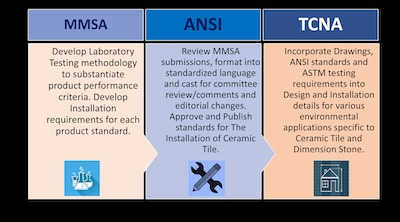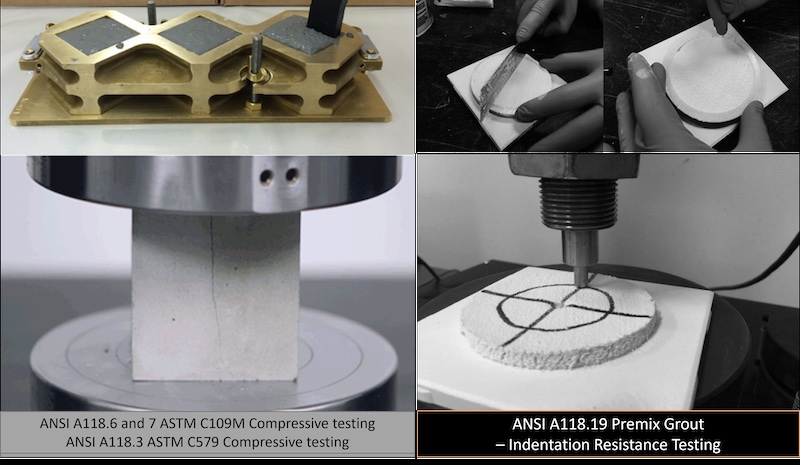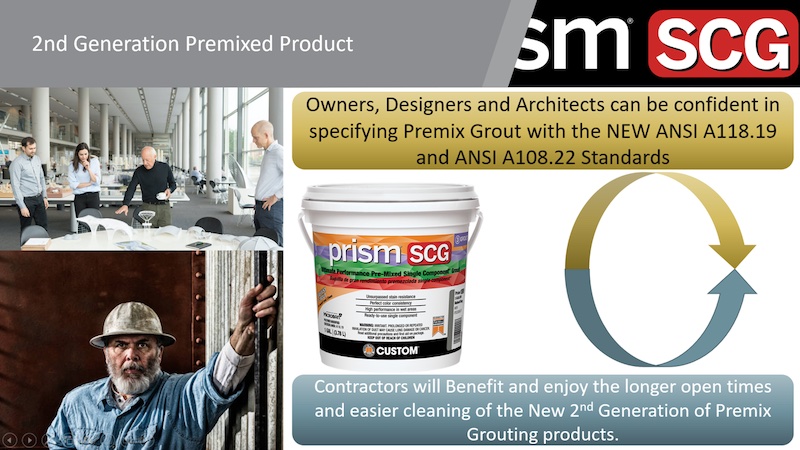Out of our solar system!
In the time it took NASA’s Voyager 2 to reach Neptune, traveling at over 35,000 miles per hour and traverse those three billion miles from Earth, we now have a NEW American National Standards Institute (ANSI) Standard for Pre-mixed Grouts.
After more than 12 years of a vast range of testing cycles and many laborious meetings by the Materials & Methods Standards Association (MMSA) Pre-mixed Grout Subcommittee, we now have a Premixed Grout product and installation standard! The standards will be used for project specifications and clearly identify required product performance.

While you may ask what/who is MMSA, certainly it is impressive to think about a spacecraft traveling at 9.6 miles per second that has been on a journey since 1977, and continues to traverse beyond our solar system today.
As for the MMSA (mmsausa.com), its members share nonproprietary technical data and participate in a free exchange of problems and solutions for the betterment of the tile trade. The purpose and objectives of the association is to establish standards of quality and performance of materials and methods for installation and use in the ceramic tile and dimensional stone industries.
The NEWLY passed official standards titles are:
- A118.19 American National Standard Specifications for Organic Pre-mixed Grouts for Installation of Ceramic Tile
- A108.22 Installation of Pre-mixed Grout in Tilework
Owners, designers, architects all want grout materials that do not stain or disintegrate during their intended lifecycle. With the new standards, they are able to specify with confidence products’ in-service performance and proper installation.


While No-mix grouts have been around a long time, they have never been able to offer the performances that Pre-mix grouts are able to provide for residential and commercial applications, due to the chemistries within the formulas.
Old ANSI grout categories
Prior to this new standard development, there were only three categories for tile grouts in ANSI A108, A118 and A136 American National Standards for The Installation of Ceramic Tile.


ANSI A118.6 American National Standard Specifications for Standard Cement Grouts for Tile Installation. (OPC)Ordinary Portland cement-based tile grouts that have been around since the beginning of ceramic tile use. These products are the least expensive, very easy to install but offer the lowest performance for stain, compressive, flexural and chemical resistance.


ANSI A118.7 American National Standard Specifications for High Performance Cement Grouts for Tile Installation. Products that meet this standard typically utilize (CAC) Calcium Aluminate cements rather than OPC/Ordinary Portland cements, which offer better stain and chemical resistance in comparison to OPC, but much lower versus Epoxy grouts. The price point is higher than OPC and lower than Epoxy grouts.


ANSI A118.3 American National Standard Specifications for Chemical Resistant, Water Cleanable Tile-Setting and -Grouting Epoxy and Water Cleanable Tile-Setting Epoxy Adhesive. These products offer the highest performance for stain and chemical resistance but are also the most expensive and are more difficult to install.
As you can see, there is a gap between cement grouts and epoxy grouts; this is why Pre-mixed grouts have been created. Pre-mixed grouts fill the desire for higher stain resistance than cement grouts can deliver at a lower cost point than epoxy grouts and are easier for the contractor to install. Some Pre-mixed grouts reach strengths equal to or greater than those of high-performance cement grouts @ 3000 psi.
ANSI Pre-mixed grout standard and a new test method


A118.19 American National Standard Specifications for Organic Pre-mixed Grouts. This new standard delivers higher performance than the CAC grouts and lower chemical resistance than epoxy, but can offer equal or even higher stain resistance than epoxy grouts at a lower cost than epoxy grouts.
Since the base chemistries of all these grouts vary drastically, a new test method for Pre-mixed grouts was required. Rather than compressive testing methods for Pre-mixed grouts, “Indentation Resistance” is used. Similar data and performance of this testing method varies across the manufacturers, based on the chemistry base of their products.
Grout joints have gotten much smaller, so color and stain resistance have become much more important than compressive testing, since the grout will rarely see a direct point load at 1/8” joint size.
Other benefits include the ability to top grout over existing installations and repair trade damage very easily.


However, some of the challenges associated with the Pre-mixed grout category have been cleanability and working time. Like any new technology, it takes time to understand the issues and time to develop new raw materials and advanced formulas to improve how these products will install and perform in service conditions.
The good news is that we now have two unique standards and a new generation of materials coming onto the market with products like Prism® SCG Ultimate Performance Pre-Mixed Single Component® Grout. These offer even higher strengths, better stain resistances, improved open times and the easiest grout to install versus epoxy and cements.
These products certainly can and should be the future of grouting technologies, since they offer very high performance at a reasonable cost and are getting much easier to install. Maybe they can eventually replace cement and epoxy grouts altogether?


While writing this, I cannot stop thinking about the very hard work that was put into this effort by the dedicated men and women that work in different facets of our industry from standards organizations, material manufacturers, contractors, consultants, engineers, and raw material suppliers. I encourage anyone who is interested in participating to better our industry, to get involved with any one of the various tile trade organizations available within your sector.
A big “Thank You” to the commitment of the MMSA for the 12 years this effort took – we all will continually appreciate it!
References:
NASA
https://voyager.jpl.nasa.gov/mission/science/neptune/
https://voyager.jpl.nasa.gov/mission/did-you-know/
https://science.nasa.gov/mission/voyager/voyager-2/


Will White
Will White CTC/CMT/FCT/ISSI, is the Channel Marketing Director of Technical Support at CUSTOM Building Products. He is an avid supporter of training, improvement and development for the tile and stone industry. He is a member of Tile Council of North America (TCNA), National Tile Contractors Association (NTCA), Materials & Methods Standards Association (MMSA) and American National Standards (ANSI) Committee.







